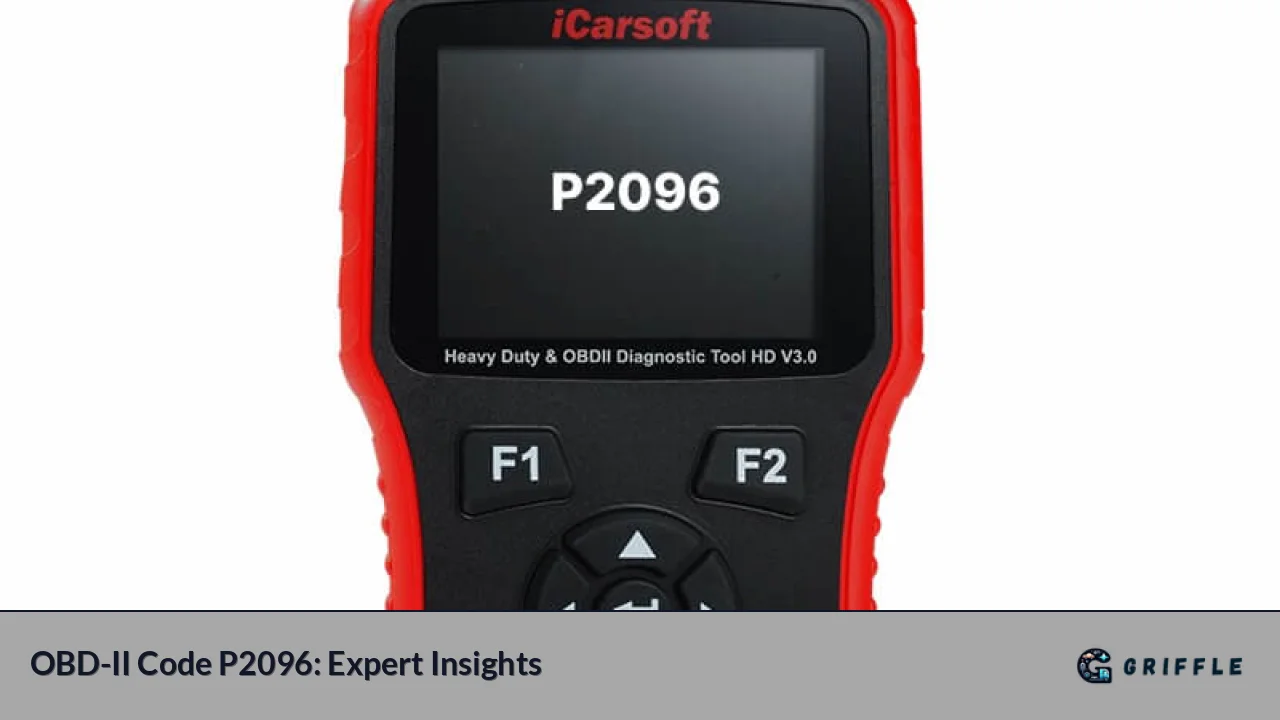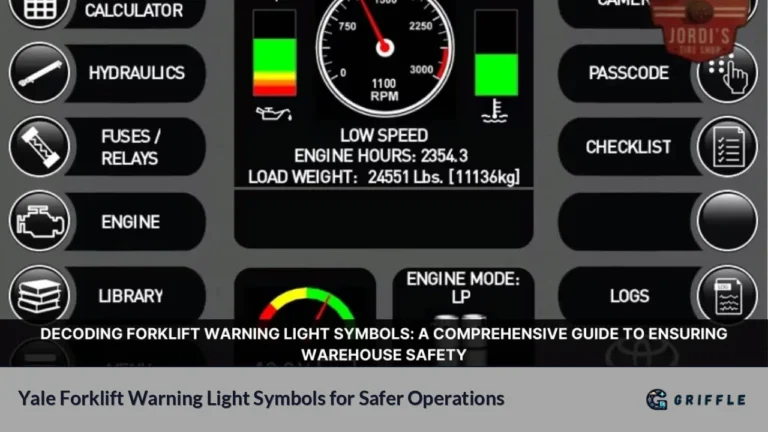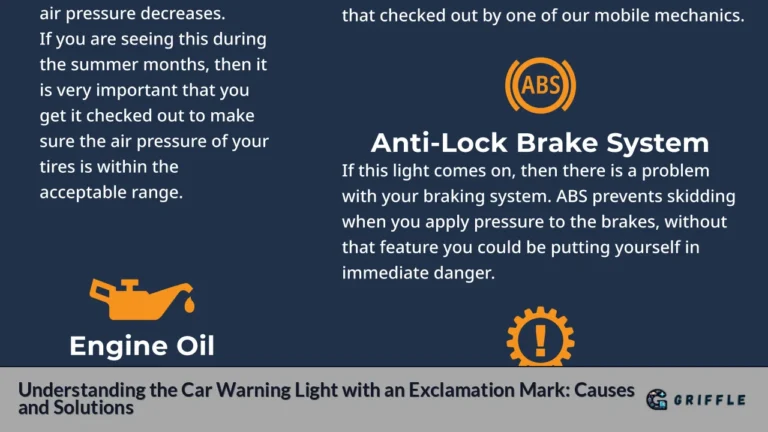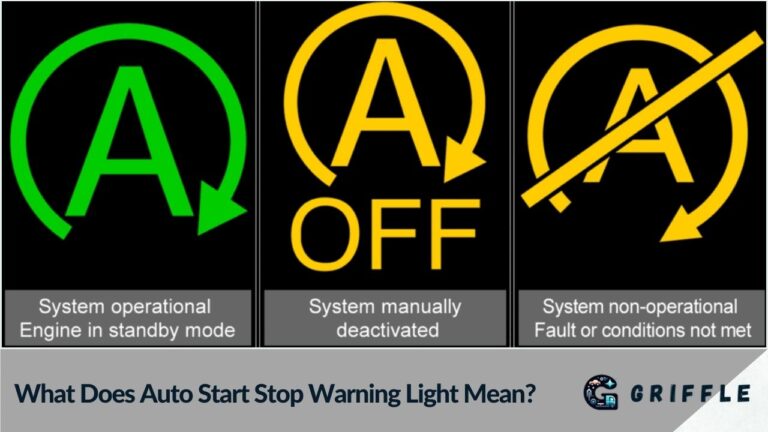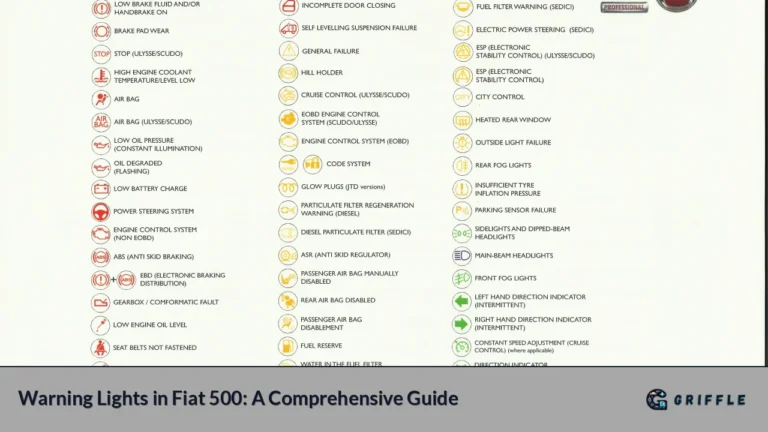The P2096 code, which stands for "Post Catalyst Fuel Trim System Too Lean (Bank 1)," is a common diagnostic trouble code (DTC) that can cause frustration for vehicle owners. This code indicates that the engine's air-fuel mixture is too lean after the catalytic converter, which can lead to a variety of performance issues. In this article, we will explore the causes, symptoms, and effective solutions for resolving the P2096 code. By understanding this code thoroughly, you can take actionable steps to restore your vehicle's performance and efficiency.
Overview of P2096 Code
| Aspect | Details |
|---|---|
| Code | P2096 |
| Meaning | Post Catalyst Fuel Trim System Too Lean (Bank 1) |
| Common Symptoms | Check Engine Light, rough idle, poor fuel economy, reduced engine performance |
| Key Components Involved | Oxygen sensors, fuel injectors, fuel pressure regulator, catalytic converter |
What Does P2096 Mean?
The P2096 code is generated when the Powertrain Control Module (PCM) detects that the fuel trim on bank 1 is too lean after the catalytic converter. This means that there is an excess of oxygen in the exhaust gases compared to the amount of fuel being burned. The PCM uses data from the downstream oxygen sensor to monitor the air-fuel mixture and adjust it as necessary. If it detects a persistent lean condition, it triggers the P2096 code.
Causes of P2096 Code
Several factors can contribute to the P2096 code being triggered:
- Faulty Oxygen Sensors: A malfunctioning downstream oxygen sensor may provide incorrect readings to the PCM.
- Vacuum Leaks: Leaks in vacuum lines can introduce extra air into the engine, leading to a lean condition.
- Fuel Delivery Issues: Problems such as a clogged fuel filter, failing fuel pump, or damaged fuel pressure regulator can restrict fuel flow.
- Exhaust Leaks: Cracks in the exhaust system can allow excess air into the system after the catalytic converter.
- Mass Airflow Sensor (MAF) Issues: A malfunctioning MAF sensor can misreport airflow data to the PCM.
- Catalytic Converter Problems: A failing catalytic converter may not properly process exhaust gases, leading to incorrect oxygen readings.
Symptoms Associated with P2096 Code
When your vehicle triggers a P2096 code, you may notice several symptoms:
- Check Engine Light: The most obvious sign is an illuminated check engine light on your dashboard.
- Rough Idle: The engine may run roughly or stall during idling.
- Poor Fuel Economy: A lean condition often leads to decreased fuel efficiency.
- Reduced Engine Performance: You may experience sluggish acceleration or overall poor performance.
Diagnosing P2096 Code
Diagnosing the P2096 code requires a systematic approach:
- Use an OBD-II Scanner: Connect an OBD-II scanner to retrieve the trouble codes and freeze frame data.
- Visual Inspection: Check for visible signs of damage or wear in vacuum lines, exhaust components, and electrical connectors related to oxygen sensors.
- Test Oxygen Sensors: Monitor both upstream and downstream oxygen sensor readings using a scan tool to determine their functionality.
- Inspect Fuel System Components: Test fuel pressure and inspect components like fuel injectors and filters for clogs or failures.
- Check for Exhaust Leaks: Use smoke testing or listen for hissing sounds around exhaust components to identify leaks.
Solutions for P2096 Code
Resolving the P2096 code involves addressing its root causes:
1. Replace Faulty Oxygen Sensors
If testing reveals that either oxygen sensor is malfunctioning, replacing them is often a straightforward solution.
2. Repair Vacuum Leaks
Inspect all vacuum lines for cracks or disconnections and replace any damaged hoses.
3. Address Fuel Delivery Issues
If low fuel pressure is detected:
- Replace clogged fuel filters.
- Test and potentially replace a failing fuel pump.
- Inspect and repair any issues with the fuel pressure regulator.
4. Fix Exhaust Leaks
Identify and repair any cracks or holes in the exhaust system that could introduce extra air post-catalytic converter.
5. Clean or Replace MAF Sensor
If the MAF sensor is dirty or malfunctioning, clean it using MAF cleaner or replace it if necessary.
6. Inspect and Replace Catalytic Converter
If all other components are functioning correctly but issues persist, consider inspecting and potentially replacing a failing catalytic converter.
Conclusion
The P2096 code represents a significant issue within your vehicle's engine management system that can lead to decreased performance and efficiency if left unresolved. By understanding its causes and symptoms, you can take proactive steps toward diagnosing and fixing the problem effectively. Whether through DIY repairs or professional assistance, addressing this code promptly will ensure your vehicle runs smoothly and efficiently.
FAQs
- What does OBD-II code P2096 mean?
P2096 indicates that the post-catalyst fuel trim system on bank 1 is too lean. - What are common symptoms of a P2096 code?
Symptoms include an illuminated check engine light, rough idle, poor fuel economy, and reduced engine performance. - How do I diagnose a P2096 code?
Diagnosing involves using an OBD-II scanner, performing visual inspections, testing oxygen sensors, checking for vacuum leaks, and inspecting fuel system components. - Can I fix a P2096 code myself?
Yes, many fixes such as replacing oxygen sensors or repairing vacuum leaks can be done by DIYers with basic automotive knowledge. - What should I do if my vehicle has a persistent P2096 code?
If the code persists after repairs, consider consulting a professional mechanic for further diagnosis.
SEO Titles
- "Quick Solutions for OBD-II Code P2096"
- "Understanding and Fixing Code P2096 Efficiently"
- "Expert Guide to Resolving OBD-II Code P2096"
SEO Descriptions
- "Discover effective solutions for OBD-II trouble code P2096 with our comprehensive guide."
- "Learn how to diagnose and fix your vehicle's P2096 error code quickly."
- "Resolve your car's performance issues caused by OBD-II code P2096 with expert insights."
